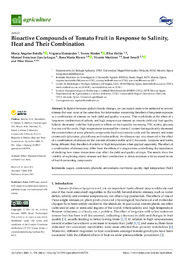Por favor, use este identificador para citar o enlazar este ítem:
https://hdl.handle.net/11000/32438Registro completo de metadatos
| Campo DC | Valor | Lengua/Idioma |
|---|---|---|
| dc.contributor.author | Botella, M. Ángeles | - |
| dc.contributor.author | Hernández, Virginia | - |
| dc.contributor.author | Mestre, Teresa | - |
| dc.contributor.author | Hellín, Pilar | - |
| dc.contributor.author | García-Legaz, Manuel Francisco | - |
| dc.contributor.author | Rivero, Rosa María | - |
| dc.contributor.author | Martínez, Vicente | - |
| dc.contributor.author | Fenoll, José | - |
| dc.contributor.author | Flores, Pilar | - |
| dc.contributor.other | Departamentos de la UMH::Biología Aplicada | es_ES |
| dc.date.accessioned | 2024-07-12T08:27:46Z | - |
| dc.date.available | 2024-07-12T08:27:46Z | - |
| dc.date.created | 2021-06-10 | - |
| dc.identifier.citation | Agriculture 2021, 11, 534 | es_ES |
| dc.identifier.issn | 2077-0472 | - |
| dc.identifier.uri | https://hdl.handle.net/11000/32438 | - |
| dc.description.abstract | In light of foreseen global climatic changes, we can expect crops to be subjected to several stresses that may occur at the same time, but information concerning the effect of long-term exposure to a combination of stresses on fruit yield and quality is scarce. This work looks at the effect of a long-term combination of salinity and high temperature stresses on tomato yield and fruit quality. Salinity decreased yield but had positive effects on fruit quality, increasing TSS, acidity, glucose, fructose and flavonols. High temperatures increased the vitamin C content but significantly decreased the concentration of some phenolic compounds (hydroxycinnamic acids and flavanones) and some carotenoids (phytoene, phytofluene and violaxanthin). An idiosyncrasy was observed in the effect of a combination of stresses on the content of homovanillic acid O-hexoside, lycopene and lutein, being different than the effect of salinity or high temperature when applied separately. The effect of a combination of stresses may differ from the effects of a single stress, underlining the importance of studying how stress interactions may affect the yield and quality of crops. The results show the viability of exploiting abiotic stresses and their combination to obtain tomatoes with increased levels of health-promoting compounds. | es_ES |
| dc.format | application/pdf | es_ES |
| dc.format.extent | 12 | es_ES |
| dc.language.iso | eng | es_ES |
| dc.publisher | MDPI | es_ES |
| dc.rights | info:eu-repo/semantics/openAccess | es_ES |
| dc.rights | Attribution-NonCommercial-NoDerivatives 4.0 Internacional | * |
| dc.rights.uri | http://creativecommons.org/licenses/by-nc-nd/4.0/ | * |
| dc.subject | sugars | es_ES |
| dc.subject | carotenoids | es_ES |
| dc.subject | phenolic | es_ES |
| dc.subject | antioxidants | es_ES |
| dc.subject | nutritional quality | es_ES |
| dc.subject | high temperature | es_ES |
| dc.subject | NaCl | es_ES |
| dc.subject.other | CDU::5 - Ciencias puras y naturales::57 - Biología | es_ES |
| dc.title | Bioactive Compounds of Tomato Fruit in Response to Salinity, Heat and Their Combination | es_ES |
| dc.type | info:eu-repo/semantics/article | es_ES |
| dc.relation.publisherversion | https://doi.org/10.3390/agriculture11060534 | es_ES |

Ver/Abrir:
agriculture-11-00534.pdf
1,86 MB
Adobe PDF
Compartir:
 La licencia se describe como: Atribución-NonComercial-NoDerivada 4.0 Internacional.
La licencia se describe como: Atribución-NonComercial-NoDerivada 4.0 Internacional.
.png)